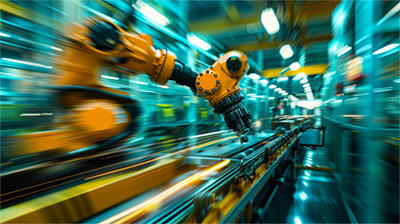Introduction: The Evolution of Modern Motion Control
In today’s rapidly advancing industrial landscape, motion control technologies are reshaping how automation systems operate — delivering unprecedented precision, speed, and energy efficiency. From AI integration to servo miniaturization, these innovations redefine manufacturing performance. As industries pursue faster, more sustainable production, intelligent motion systems have become essential to meeting modern automation goals.
High-Speed Automation Powered by Advanced Servo Systems
Servo technology remains the foundation of high-performance motion control, but recent breakthroughs have pushed it into a new era. High-resolution encoders, faster processors, and refined control algorithms have dramatically improved servo responsiveness and precision. Communication standards like EtherCAT now enable real-time synchronization across complex automation networks.
Energy efficiency has also seen major gains. Regenerative drives capture energy during deceleration, reducing power consumption, while enhanced thermal management keeps systems cool even under continuous high-speed operation. Compact, efficient servo systems now deliver both sustainability and performance — essential for modern, eco-conscious manufacturers.
Miniaturization: Compact Design Meets High Precision
The trend toward miniaturization has revolutionized servo and stepper motor design, empowering smaller devices without sacrificing torque or control. This is critical for industries like medical robotics, electronics manufacturing, and laboratory automation, where space is limited but precision is paramount.
-
Servo Motors use feedback control to dynamically adjust torque, speed, and position — ideal for high-accuracy, high-speed applications.
-
Stepper Motors operate in discrete steps, offering predictable incremental motion for applications like 3D printing or compact CNC systems.
Advancements in material science — including high-strength alloys, magnetic composites, and improved winding techniques — have increased torque density while reducing size and heat output. Companies such as Industrial Indexing Systems (IIS) exemplify this progress with their Emerald Automation Series, merging intelligent servo control with compact energy-efficient design for high-performance manufacturing.
Robotics and Motion Control: A Symbiotic Revolution
Modern robotics owes much of its advancement to the evolution of motion control. Precision algorithms and real-time feedback loops now enable robots to perform intricate, high-speed operations with exceptional reliability.
Collaborative robots, or cobots, demonstrate this synergy best. They rely on adaptive motion control integrated with sensors and AI software to ensure safe, efficient human-robot collaboration. Enhanced connectivity through digital protocols allows cobots to dynamically respond to environmental changes.
PBC Linear’s Cobot Feeder exemplifies this integration, combining automated tray handling, Ethernet connectivity, and intuitive HMI control to enhance throughput and safety. This convergence of robotics and motion control defines the next generation of intelligent, flexible automation systems.
Digitalization: Enabling Smarter, More Connected Motion Systems
Digitalization transforms traditional motion control into an intelligent, data-driven ecosystem. Through the Internet of Things (IoT) and Industry 4.0, servo systems now collect and share real-time performance data, enabling predictive maintenance and dynamic optimization.
This interconnected environment enhances Overall Equipment Effectiveness (OEE) by reducing downtime and enabling precision-driven energy management. Digitalized servo systems make micro-adjustments on the fly, ensuring accuracy under varying conditions.
BBS Automation’s Smart Machine showcases how digitalization enhances manufacturing — combining intelligent engineering, motion analytics, and adaptive control to deliver precision and speed aligned with Industry 4.0 standards.
AI-Driven Motion Control: Learning Systems for Real-Time Optimization
Artificial Intelligence and machine learning are elevating motion control to new heights of intelligence and adaptability. AI-enhanced control systems continuously learn from operational data, optimizing performance in real time to improve speed, accuracy, and energy usage.
In semiconductor production, medical device assembly, and precision machining, even the slightest motion deviation can be costly. AI algorithms prevent such errors by predicting wear, fine-tuning trajectories, and minimizing vibration. These self-optimizing systems ensure consistent quality, reduce maintenance, and extend equipment lifespan — all while improving throughput and sustainability.
The Future of Motion Control: Integration, Efficiency, and Intelligence
The convergence of AI, miniaturization, and digitalization is shaping the future of motion control. Next-generation systems will be defined by seamless integration, real-time adaptability, and energy-conscious performance.
Manufacturers embracing these technologies will gain competitive advantages — achieving higher productivity, lower operating costs, and greater system flexibility. The future of automation belongs to those who unite smart servo systems, data intelligence, and sustainable design into cohesive motion strategies.
Conclusion: Driving the Next Generation of Smart Automation
Motion control is no longer just about movement — it’s about intelligence, efficiency, and integration. As servo systems evolve alongside AI and digital technologies, they empower industries to meet new standards of speed, sustainability, and precision.
Forward-thinking manufacturers who invest in these advanced motion systems are not only optimizing production but also shaping the next frontier of industrial innovation.


